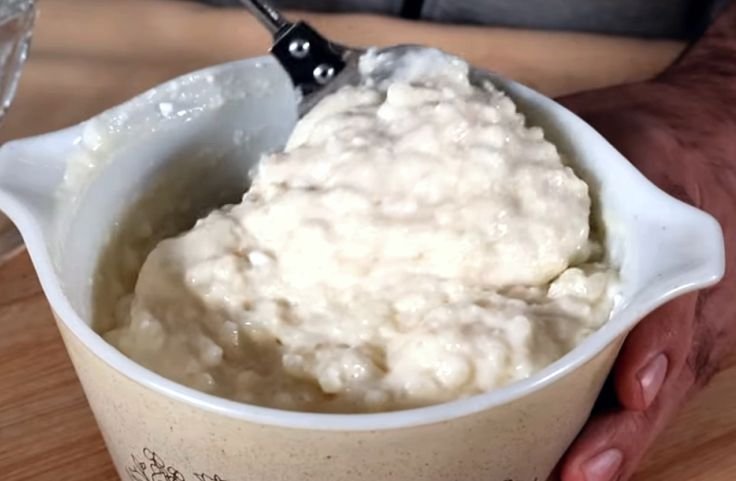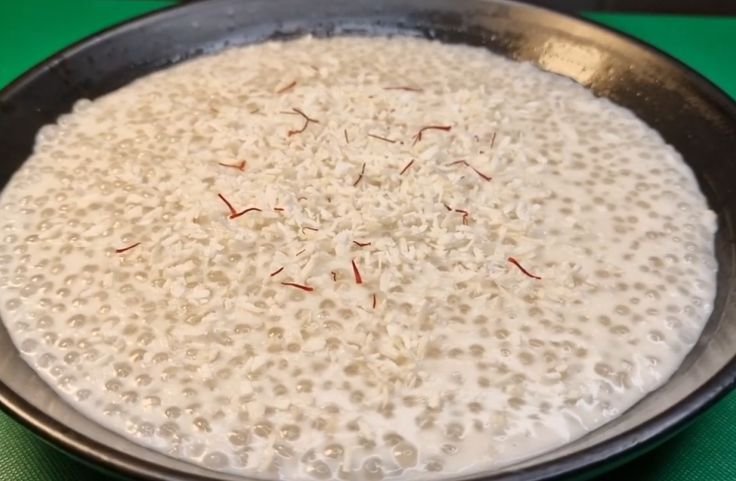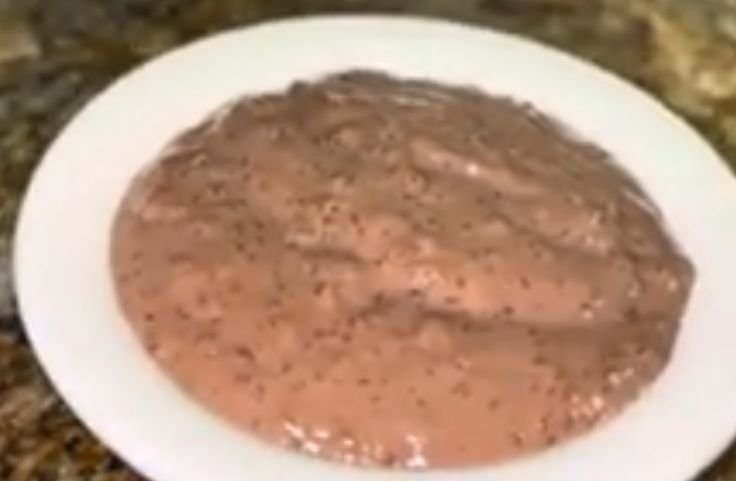Tapioca pudding recipes bring rich, creamy comfort to your kitchen with flavors that satisfy every craving, perfect for cozy nights, quick desserts, or impressing guests with something nostalgic yet fresh.
Tapioca pudding recipes offer a delightful way to bring warmth and texture to your dessert table.
Whether you prefer a classic approach or like to experiment with flavors and ingredients, there’s a tapioca pudding variation to suit your style.
From stovetop versions that remind you of homemade comfort to modern twists with coconut milk, fruit, or spices, these recipes are as versatile as they are satisfying.
They’re often simple to prepare, making them a favorite for both beginner and seasoned cooks alike.
What makes tapioca pudding recipes truly shine is their adaptability.
You can serve them warm or chilled, dress them up for special occasions, or keep them plain for a cozy treat.
In this post, you’ll find inspiration for creating creamy, smooth, and satisfying tapioca puddings to enjoy any time of year.
Recommended: Is Tapioca Pudding Healthy?
Table of Contents
- Basic Tapioca Pudding Recipe: A Simple Starting Point for Creamy Success
- Creative Tapioca Pudding Recipes Variations: Easy Ways to Keep It Fresh and Fun
- Global Tapioca Pudding Recipes: Sweet Traditions From Around the World
- Health-Conscious Versions: Lighter Ways to Enjoy Tapioca Pudding
- Cultural Variations of Tapioca Pudding
- Tapioca Pudding Tips and Fixes: Simple Solutions for Smooth, Creamy Results
- Serving Ideas and Toppings: Ways to Make Tapioca Pudding Look and Taste Even Better
- Conclusion
- FAQs About Tapioca Pudding Recipes
Basic Tapioca Pudding Recipe: A Simple Starting Point for Creamy Success

Making tapioca pudding at home doesn’t have to be complicated. With a few pantry staples and a little patience, you can create a dessert that’s comforting, creamy, and satisfying.
Simple ingredients list
You only need a short list of ingredients to make tapioca pudding from scratch.
Grab small tapioca pearls, milk, sugar, eggs, and a pinch of salt. Vanilla extract adds a smooth finish, so don’t skip it.
Use whole milk for the richest texture, or try dairy-free options like almond or coconut milk if you’re going plant-based.
The key is to let the pearls soak up the flavor while cooking slowly so they become soft and chewy without breaking down.
Step-by-step cooking instructions
Start by soaking the tapioca pearls in water for 30 minutes so they soften and cook evenly.
After draining, combine them with milk and sugar in a saucepan over medium heat. Stir often to prevent sticking or burning.
Once the mixture starts to thicken, add the beaten eggs slowly while stirring to avoid scrambling them.
Keep cooking until the pudding is creamy and the pearls are translucent. Finish with vanilla and let it cool or serve warm.
Tips for texture and flavor
If your pudding turns out too thick or lumpy, it’s probably cooking too fast or without enough stirring.
Use low heat and a steady hand. To get a creamier result, add a splash of cream or condensed milk near the end.
For extra flavor, mix in cinnamon, nutmeg, citrus zest, or even chocolate chips.
You can also balance the sweetness by adding a little sea salt or topping with tangy fruit like berries or mango slices.
Storage and serving ideas
Tapioca pudding stores well in the fridge for up to five days. Keep it in an airtight container to maintain freshness.
It thickens as it chills, so stir in a little milk before serving if it’s too stiff.
Serve it in small bowls or jars and top with fruit, whipped cream, or a drizzle of honey.
You can also layer it in parfait glasses with granola and jam for a fun twist on breakfast or dessert.
See a comprehensive post on how to make tapioca pudding.
Related Posts
Tapioca vs Taro: A Quick Comparison
What Actually is in Tapioca Pudding?
Creative Tapioca Pudding Recipes Variations: Easy Ways to Keep It Fresh and Fun
Tapioca pudding doesn’t have to stay plain. These creative recipe ideas let you change things up with flavor, texture, and style, so you’re never stuck with just one version.
Classic Stovetop Tapioca Pudding

This old-school favorite never gets tired. You’ll use small tapioca pearls, whole milk, eggs, sugar, salt, and a splash of vanilla.
Soak the pearls first, then simmer gently while stirring often to avoid clumps.
Temper the eggs slowly to make the pudding silky instead of scrambled.
Once cooked, it thickens into a custard-like texture that feels both rich and familiar.
You can serve it warm on a chilly evening or chilled with a sprinkle of cinnamon or nutmeg.
This version’s comfort-food charm comes from its smooth consistency and creamy flavor, making it a reliable go-to.
If you’re new to tapioca, this version is the one to start with, it sets the standard for what homemade pudding should taste like.
Coconut Milk Tapioca Pudding

If you need a dairy-free pudding, coconut milk delivers full flavor and a creamy mouthfeel without any compromise.
Use canned coconut milk for best results; it’s thicker and richer than boxed versions.
Soak the tapioca pearls first, then cook them slowly in the coconut milk with sugar and a pinch of salt.
Add vanilla or almond extract if you like an extra boost. For sweetness, try using maple syrup or agave instead of refined sugar.
This variation works great for vegan diets and tastes naturally tropical.
You can top it with fresh mango slices, shredded coconut, or lime zest.
Its subtle sweetness and smooth finish make it a favorite for both non-dairy eaters and anyone looking for something light, fragrant, and satisfying.
Chocolate Tapioca Pudding

This is for the days when you’re craving something rich and indulgent.
Chocolate tapioca pudding combines the familiar chew of pearls with deep cocoa flavor.
You can mix in unsweetened cocoa powder or melt good-quality dark chocolate into the milk while the tapioca cooks.
Don’t forget a pinch of salt, it brings out the chocolate even more.
Use whole milk or a creamy plant-based option, depending on your preference. Stir frequently and add sugar to taste.
Once it thickens, let it cool slightly or chill fully for a mousse-like texture.
Top with whipped cream or chocolate shavings for a dessert that’s simple but feels special.
It’s a crowd-pleaser that blends texture and richness in every bite, perfect for chocolate lovers of any age.
Chai-Spiced Tapioca Pudding
Spice up your pudding with the warm, familiar notes of chai.
Simmer milk with black tea bags, cinnamon, cardamom, cloves, ginger, and a touch of peppercorn before adding the tapioca.
Once the spiced milk is infused, strain it and return it to the heat with the soaked pearls and sugar.
Stir slowly and let the flavors deepen as the pudding thickens.
The result is a cozy, aromatic dessert that feels like a hug in a bowl.
Serve warm with a sprinkle of nutmeg or chilled with almond slivers on top.
You can also sweeten with honey for a more traditional flavor.
Chai tapioca is perfect for fall or winter evenings, especially when you want something both comforting and a little unexpected.
Matcha Tapioca Pudding
This version gives your pudding a vibrant green color and a slightly bitter, earthy twist that pairs beautifully with creamy texture.
Use culinary-grade matcha powder for cooking. It blends best with milk and avoids clumping.
Start by dissolving matcha in warm water, then stir it into your milk mixture before cooking the tapioca.
Add sugar or honey to balance the flavor. The pudding should be smooth with a clean finish, offering a refreshing change from overly sweet desserts.
Chill it fully for the best experience. Top with red beans, a dusting of matcha, or coconut flakes.
It’s popular with matcha fans and works well as a lighter dessert after meals.
Plus, it adds a nutritional boost with antioxidants and a gentle caffeine lift.
Fruit-Infused Tapioca Pudding
This is a bright and refreshing take on traditional pudding. You can stir fruit directly into the pudding or add a layer of compote on top.
Mango, pineapple, strawberry, blueberry, or raspberry all pair well with the gentle sweetness of tapioca.
Cook the pearls as usual, then fold in pureed or diced fruit, or swirl in jam before chilling.
Citrus zest or a squeeze of lemon juice keeps the flavor light and balanced.
If you want more contrast, use a berry sauce over chilled pudding for a layered effect.
This version is especially nice in summer or when serving guests.
The fruity notes brighten the creamy base, creating a dessert that’s fun, colorful, and naturally sweet without feeling heavy.
Vegan Tapioca Pudding
Vegan tapioca pudding is easy to make and just as satisfying as the classic version.
You don’t need eggs or dairy to get that creamy, comforting texture.
Start with a plant-based milk like almond, oat, or soy; each brings a slightly different flavor and creaminess, so choose what you enjoy most.
Since traditional recipes use eggs to thicken the pudding, you can replace them with cornstarch or arrowroot powder.
These thickeners work well and give the pudding a smooth finish. Stir them in slowly to avoid lumps, and cook on low heat until it thickens gently.
For sweetness, skip refined sugar and go for maple syrup or agave.
Both blend well with the plant milk and give a clean, natural taste.
Add a splash of vanilla for extra flavor, and chill it before serving.
Vegan tapioca pudding is simple, smooth, and fits right into a plant-based or dairy-free lifestyle.
Mango Tapioca Pudding (Thai-Style)
Mango tapioca pudding is inspired by Southeast Asian flavors and makes a refreshing twist on the classic.
It starts with a base of sweetened coconut milk, which gives the pudding a rich and tropical taste without being heavy.
The small tapioca pearls soak up the flavor and add a soft, chewy texture to every bite.
Once the pudding has cooled, top it with ripe mango slices or a smooth mango puree.
The natural sweetness and slight tang of the mango balance perfectly with the creamy coconut.
This Thai-style version is best served chilled, especially on warm days when you want something light and fruity. It’s also easy to prepare ahead of time for gatherings or dessert prep.
With its simple ingredients and vibrant flavor, mango tapioca pudding is a crowd-pleaser that brings something a little different to the table while still staying true to the comfort of pudding.
Related: Is Tapioca Pudding Really Good for You?
Global Tapioca Pudding Recipes: Sweet Traditions From Around the World
Tapioca pudding takes on exciting new flavors when you look beyond your borders.
These global versions bring cultural flair and bold taste to your table using local ingredients and traditions.
Sabudana Kheer India: Spiced Tapioca with Milk and Cardamom
In Indian kitchens, sabudana kheer is a treasured dessert, especially during festivals and fasting periods.
This pudding starts with soaking sabudana, which are small white tapioca pearls, until they become soft and plump.
They’re then simmered in whole milk with sugar, crushed cardamom pods, and sometimes saffron for color and aroma.
As it thickens, it turns velvety and fragrant. Garnish with roasted cashews or almonds and a few golden raisins for a festive finish.
The blend of creamy texture and warm spice makes sabudana kheer a soothing treat that feels both nourishing and indulgent.
Serve it warm during cooler months or chilled in summer to enjoy its gentle sweetness and comforting flavor.
It’s a beautiful example of how a few pantry staples can become something truly memorable with the right touch of spice.
Brazilian Sagu: Tapioca Pearls Cooked in Grape Juice or Wine
Brazilian sagu turns tapioca into something bold and deeply flavorful.
Instead of milk, the pearls are slowly cooked in red grape juice or wine, which gives them a deep purple hue and a tangy sweetness.
As they cook, the pearls absorb the juice and become tender with a slightly chewy texture.
Sugar and cinnamon sticks are often added to balance the flavor and create a subtle warmth.
The pudding is typically served chilled, sometimes with a spoonful of vanilla or sweetened condensed milk on top for creaminess.
Sagu is a regional specialty in southern Brazil, especially in the state of Rio Grande do Sul, where it’s passed down through generations.
If you enjoy fruit-forward desserts or want something that feels both rustic and refined, this version offers a satisfying change from creamy puddings.
Health-Conscious Versions: Lighter Ways to Enjoy Tapioca Pudding
You don’t have to give up flavor to make tapioca pudding a better fit for your diet.
These versions are lighter, more nourishing, and made with thoughtful swaps that still deliver comfort in every bite.
Low-Sugar Tapioca Pudding Using Monk Fruit or Stevia
Cutting down on sugar doesn’t mean sacrificing taste. To make a low-sugar tapioca pudding, replace traditional white sugar with monk fruit sweetener or liquid stevia.
These natural sugar substitutes work well in hot recipes and blend easily into milk.
Use small tapioca pearls as usual and simmer them with your preferred milk.
Add your sweetener gradually so you can control the flavor without going overboard.
A splash of vanilla or a bit of cinnamon adds depth without needing extra sugar.
This version is ideal if you’re managing blood sugar, reducing calories, or simply trying to avoid refined ingredients.
The result is still creamy and satisfying, with a gentler sweetness that won’t leave you feeling sluggish.
It’s a smart way to enjoy dessert while sticking to your wellness goals.
High-Protein Option with Greek Yogurt
To give your tapioca pudding a protein boost, stir in a few spoonfuls of plain or vanilla Greek yogurt after the pudding has cooled slightly.
The yogurt adds thickness, tang, and extra creaminess, along with a solid hit of protein that helps keep you full longer.
Cook the tapioca pearls in milk and a bit of honey or maple syrup, then fold in the yogurt once the mixture is no longer hot.
You can serve it right away or chill it for later.
This version works well as a post-workout snack, breakfast option, or guilt-free dessert.
To make it even more satisfying, top with nuts, seeds, or a swirl of almond butter.
The yogurt not only changes the texture in a good way but also adds gut-friendly probiotics for extra health benefits.
Plant-Based Versions with Almond Soy or Oat Milk
You can make tapioca pudding completely dairy-free by swapping regular milk for almond, soy, or oat milk.
Each option gives a different flavor and texture, so feel free to try a few to find what you like best.
Almond milk creates a lighter pudding with a subtle nutty taste, while soy milk adds a creamy base with more protein.
Oat milk brings a natural sweetness and richness that works well in chilled desserts.
Use the same cooking method: soak the pearls, simmer with your chosen milk, and stir frequently.
Add vanilla, maple syrup, or cinnamon to flavor the pudding naturally.
You won’t miss the dairy, and the result is just as smooth and satisfying.
These versions are perfect if you’re vegan, lactose-intolerant, or just trying to eat more plant-based meals without giving up your favorite comfort foods.
Cultural Variations of Tapioca Pudding
Tapioca pudding is a globally cherished dessert that finds unique expressions across various cultures.
Each culture imbues this delightful dish with its distinct ingredients and preparation methods, resulting in globally rich flavors and textures.
Let’s check out most of the popular variations from Brazil, the Philippines, and India, providing.
Brazillian Tapioca Pudding
In Brazil, “tapioca de leite” is a beloved delicacy. It combines tapioca pearls with creamy milk, sweetened condensed milk, and a hint of coconut milk, creating a luscious and comforting pudding.
The process involves the steps outlined above, soaking the tapioca pearls until they achieve a translucent consistency, then simmering them in the milk mixture until thickened.
This Brazilian version is often enjoyed chilled, offering a refreshing yet indulgent treat.
The coconut milk imparts a subtle tropical essence, enhancing the overall experience.
Philippine Tapioca Pudding
The Philippines brings a colorful twist to tapioca pudding with “sago at gulaman.” This variant features tapioca pearls alongside gelatin cubes (gulaman), often flavored with pandan or other fruits.
The ingredients are mixed with a sweet syrup made from brown sugar and water, creating a vibrant and chewy dessert.
The varied textures of the tapioca and gelatin, combined with the syrup’s caramelized sweetness, make this Filipino specialty a delightful sensory experience.
It is typically served as a cool refreshment, perfect for the country’s tropical climate.
Indian Tapioca Pudding
India’s version, “sabudana kheer,” stands out with its aromatic spices and rich flavors.
Sabudana, or sago pearls, are cooked in milk with sugar, cardamom, and sometimes saffron, resulting in a fragrant and creamy pudding.
A garnish of chopped nuts and raisins adds a delightful crunch and sweetness, making this variant a festive favorite.
The warm spices and nutty additions not only enhance the flavor but also create a comforting, warming dessert that is particularly popular during religious observances.
These cultural variations of tapioca pudding highlight its adaptability and the creative ways different regions incorporate local ingredients and techniques.
This global perspective enriches our appreciation of tapioca pudding, underscoring its ability to bring a taste of tradition and innovation to the dessert table.
Tapioca Pudding Tips and Fixes: Simple Solutions for Smooth, Creamy Results
Even the best recipes can go wrong without the right techniques.
Use these tips to fix common issues and make your tapioca pudding consistently smooth, creamy, and full of flavor every time.
How to avoid lumps or curdling
Lumps form when tapioca cooks too fast or the eggs scramble. To prevent this, stir continuously over low heat and temper the eggs before adding. Always cook gently and never rush the process.
Best practices for cooking small pearl vs. instant tapioca
Small pearls need soaking and slow simmering for full texture. Instant tapioca doesn’t require soaking and cooks faster.
Follow package directions closely and avoid overcooking, which can make both types mushy or sticky.
Adjusting consistency or sweetness
If the pudding is too thick, stir in warm milk until it loosens. If too runny, cook a few minutes longer.
For sweetness, add more sugar or syrup gradually and always taste as you go.
Common mistakes to avoid
Skipping the soaking step, using high heat, or not stirring often can ruin the texture.
Measure ingredients carefully and don’t forget to add flavor like vanilla or salt to balance the taste.
Serving Ideas and Toppings: Ways to Make Tapioca Pudding Look and Taste Even Better
How you serve tapioca pudding can change the whole experience. From temperature to toppings to presentation, these ideas help you turn a simple dish into something special.
Serve warm or chilled
Tapioca pudding is great either warm or cold. Serve it warm for cozy comfort, or chill it for a firmer texture and refreshing taste.
Choose based on the season, mood, or guest preference.
Toppings: toasted coconut, cinnamon, chopped nuts, seasonal fruits
Sprinkle toasted coconut or chopped nuts for crunch. Add cinnamon or nutmeg for warmth.
Fresh fruits like berries or mango brighten each bite and add color, turning a plain bowl into a treat.
How to plate it beautifully for guests
Spoon pudding into clear glasses or small ramekins. Layer with fruit or jam.
Finish with a sprinkle of spice, a mint leaf, or a drizzle of honey. Keep portions neat and visually inviting.
Conclusion
Tapioca pudding recipes bring rich, creamy comfort to your kitchen with flavors that satisfy every craving, perfect for cozy nights, quick desserts, or impressing guests with something nostalgic yet fresh.
From classic stovetop versions to exciting global spins and health-conscious options, there’s a pudding style for every taste and occasion.
Whether you go dairy-free with coconut milk, add protein with Greek yogurt, or keep it traditional with milk and vanilla, the flexibility of tapioca pudding makes it a timeless dessert.
Use small pearls or instant versions based on your schedule, and top with fruits, spices, or nuts to elevate the experience.
Simple, satisfying, and endlessly adaptable, tapioca pudding is dessert comfort made easy, one creamy spoonful at a time.
FAQs About Tapioca Pudding Recipes
What are the different types of tapioca pudding recipes?
Tapioca pudding recipes include classic stovetop, coconut milk, chocolate, chai-spiced, matcha, fruit-infused, and global styles like Thai mango or Indian sabudana kheer.
Which tapioca pudding recipe is best for dairy-free diets?
Coconut milk tapioca pudding is a top dairy-free choice. It’s rich, creamy, and plant-based, with options to sweeten using maple syrup or agave nectar.
Are there high-protein tapioca pudding recipe options?
Yes. Recipes with Greek yogurt or protein-rich plant milk boost nutrition. Add nuts or seeds as toppings to increase protein without changing texture or flavor.
What are good seasonal tapioca pudding recipe ideas?
Matcha and fruit-infused puddings are great in summer, while chai-spiced or chocolate versions suit fall and winter.
Flavor choices can reflect seasonal moods or ingredients.

Chimeremeze Emeh is a writer and researcher passionate about Africa’s most transformative root crop—cassava. Through his work at cassavavaluechain.com, he explores the entire cassava industry, from cultivation and processing to its diverse applications in food, health, and industrial use.
He also writes for palmoilpalm.com, where he shares his extensive experience and deep-rooted knowledge of palm oil, covering red palm oil, palm kernel oil, and refined products. His work there reflects his lifelong connection to agriculture and his commitment to promoting sustainable value chains in Africa.
Driven by curiosity and purpose, Chimeremeze aims to shed light on how cassava continues to empower communities, strengthen food systems, and link traditional farming wisdom with modern innovation.

